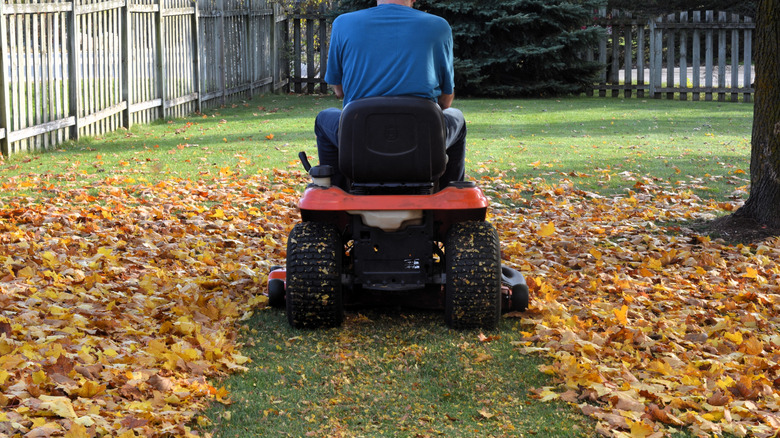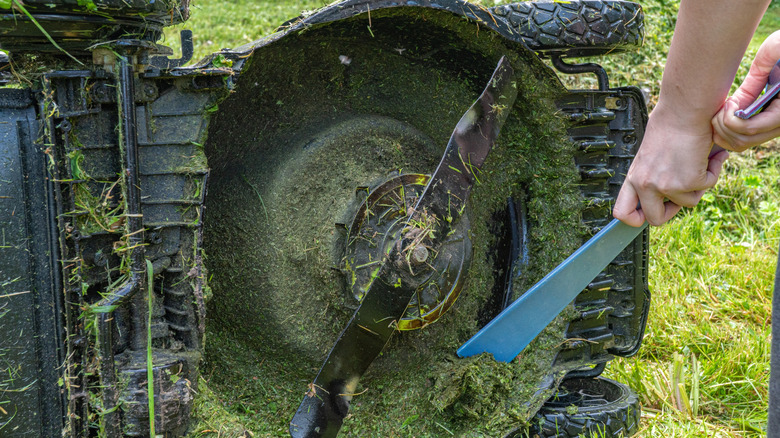 Mike Hill Photography/Shutterstock
Mike Hill Photography/Shutterstock
As the weather gets colder, lawn mowing is ramping down for many homeowners. However, fall is a good time to mulch, instead of raking the yard. But if your mower is leaving clumps of grass behind, or none at all, there's a good reason for it. Chances are, your lawn mower's deck has buildup. It's an annoying problem, but why is it happening in the first place?
Everyone makes mistakes with their mower, but If you're trying to mulch with a regular blade, you're adding to the problem. Mulching blades actually lift and cut the grass twice, while mower blades cut the grass once, which can equal more buildup. Mowing tall grass is also problematic, and of course, mowing wet grass is never a good idea, as it will stick to the deck, and the blade. Plus, your blade might be on the dull side. If it is, you won't get a consistent cut, which will also lead to accumulation. The chute may even be jammed up, which won't allow anything to come out, despite how sharp your blade might be.
A combination of wet grass and stubborn residue can lead to corrosion underneath your deck. If this happens, it will only get worse. Consistent buildup will block the deck's airflow as well, which in turn will cause your mower to work harder. At the very least, your mower will use more gas, and the clumps it leaves behind can actually encourage the growth of nasty fungus in your yard.
Tips for properly maintaining your lawn mower deck
 Natasha Zakharova/Shutterstock
Natasha Zakharova/Shutterstock
To address the buildup under your lawn mower deck, you'll have to clean it out, which is one of our tips to maintaining your mower. It's important to remove the mower's spark plug beforehand, as you'll eliminate any chance of injury due to an engine mishap. Then you can use a tool, a shop towel, or a garden hose to clean the debris out. Be as thorough as you can to ensure nothing is left behind.
Once the deck is dry, you can coat the walls with a silicone spray that will help prevent corrosion and rust. There are cleaners specifically designed to do this as well, but be sure you know what's in them before using them. Otherwise, you could be harming your yard. If you want to go the DIY route, you can even use non-stick cooking spray or vegetable oil. This will prevent grass from sticking so easily the next time you mow. Plus, if it does, you should be able to quickly remove it.
When your deck is ready and you start mulching again, maintain your throttle in the fast position, while also going slower than you usually would. You'll get the most out of your cut, making for a more effective session. In the end, the most important thing is to check your mower deck after you're done mulching, even if you're in a hurry. It's the best way to ensure that you're on top of everything.

